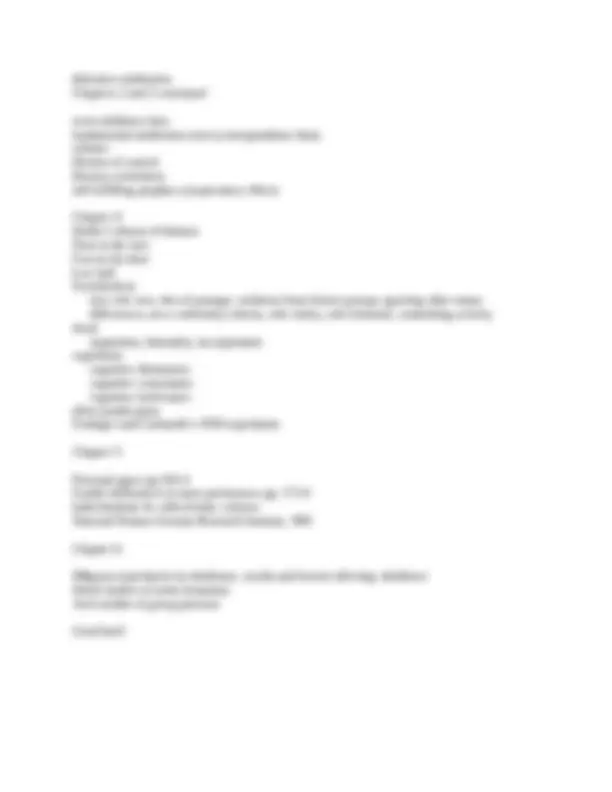



Study with the several resources on Docsity

Earn points by helping other students or get them with a premium plan


Prepare for your exams
Study with the several resources on Docsity

Earn points to download
Earn points by helping other students or get them with a premium plan
Community
Ask the community for help and clear up your study doubts
Discover the best universities in your country according to Docsity users
Free resources
Download our free guides on studying techniques, anxiety management strategies, and thesis advice from Docsity tutors
Midterm Review Material Type: Notes; Professor: Fanos; Class: Social Psychology; Subject: Psychology; University: California State University-East Bay; Term: Fall 2011;
Typology: Study notes
1 / 2

This page cannot be seen from the preview
Don't miss anything!


Midterm Social Psychology - Review _Remember to bring a scantron and number 2 pencil to exam. BE ON TIME! Exam will be based on your book and class lectures. 50 multiple choice questions. Chapters 1-
Chapter 1:_ Definition of social psychology Methods of research: Case example Field experiment Survey Laboratory experiment Strengths and weaknesses of each Mundane realism Correlation hypothesis unrepresentative sample response options extraneous variables independent variables Chapters 2 and 3: Charles Cooley reflected appraisal Learned helplessness Defensive pessimism Self-serving bias Egocentricity Cognitive conservatism Social comparison Downward comparison Public self-consciousness Self- monitoring Self-handicapping Social cognition Priming Projection Availability bias (underusing base-rate information, base rate fallacy, saliency bias) Retrospective distortion Overconfidence bias Internal attribution External attribution
defensive attribution Chapters 2 and 3 continued: overconfidence bias fundamental attribution error (correspondence bias) schema illusion of control illusory correlation self fulfilling prophecy (expectancy effect) Chapter 4: Heider’s theory of balance Door in the face Foot in the door Low ball Socialization new role sets, rites of passage, isolation from former groups, ignoring other status differences, new conformity criteria, role clarity, role rehearsal, committing activity ritual separation, liminality, incorporation cognitions cognitive dissonance cognitive consonance cognitive irrelevance effort justification Festinger and Carlsmith’s 1959 experiment Chapter 5: Personal space pp 163- Gender differences in mate preferences pp. 175- Individualistic & collectivistic cultures National Human Genome Research Institute, NIH Chapter 6: Milgram experiment on obedience, results and factors affecting obedience Sherif studies of norm formation Asch studies of group pressure Good luck!